Toilet To Tap Is Here
The California State Water Resources Control Board on Tuesday approved new regulations for direct potable reuse, AKA “toilet to tap” — that’s when purified water is piped directly from a sewage treatment plant to your home.
The California State Water Resources Control Board on Tuesday approved new regulations for direct potable reuse, AKA “toilet to tap” — that’s when purified water is piped directly from a sewage treatment plant to your home.
The largest water recycling plant in the world can be found in Fountain Valley, California, and work is underway to make it even bigger.
According to the Orange County Water District, its Groundwater Replenishment System takes about 110 million gallons of wastewater from the county’s sanitation district every day that would normally be dumped in the Pacific Ocean.
Construction work is underway in several areas of San Diego, building major infrastructure projects for Phase 1 of Pure Water San Diego.
Phase 1 of Pure Water San Diego, including pipelines, pump stations, and treatment facilities, has started in Morena, Bay Park, Clairemont, University City, Miramar, and Scripps Ranch communities. It is a milestone toward the realization of securing a local, drought-resilient water supply for San Diegans for generations to come.
Pure Water is the City of San Diego’s largest-ever infrastructure program that will provide nearly half of San Diego’s water supply by 2035. Pure Water will use purification technology to clean recycled wastewater and is a cost-effective investment for San Diego’s water supply needs.
Residents, businesses, and commuters may be impacted by road closures, detours, and construction noise during construction. Construction for this project will primarily take place on weeknights from 7 p.m. to 5 a.m., except on Nobel Drive, when construction will take place on weekdays from 8:30 a.m. to 3:30 p.m. Tunneling work will be done around the clock with adherence to noise requirements.
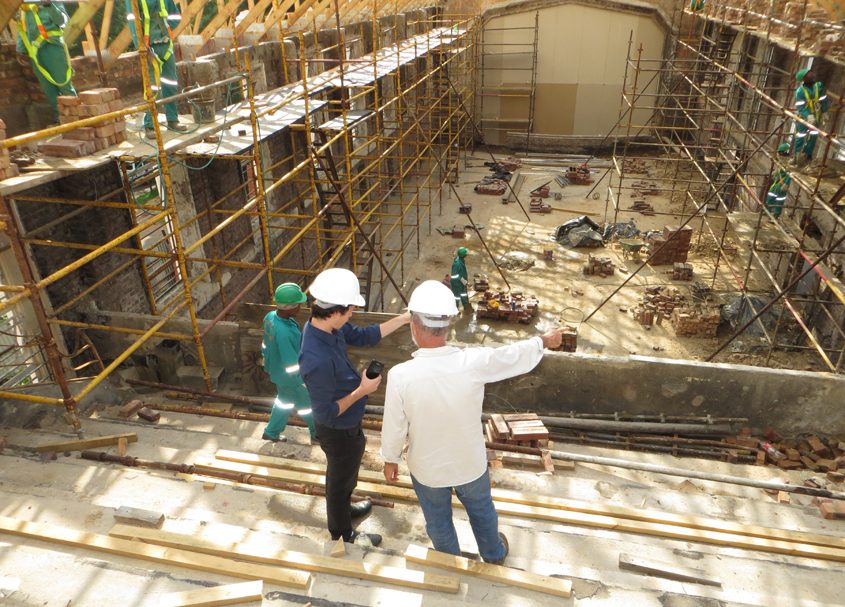
“Potholing” is underground work that finds the location and depth of existing utilities in the public right-of-way. Potholing is currently being done for the Morena Northern Pipeline & Tunnels and the North City Pure Water San Diego Pipeline projects. Photo: City of San Diego
Upon its completion, Pure Water San Diego will contribute 30 million gallons per day of high-quality purified water, reducing the City’s dependence on imported water.
The Morena Northern Pipelines and Tunnels project now underway will connect to the Morena Pipelines Middle Alignment to the south and the North City Water Reclamation Plant to the north.
This project includes portions of two 10.5-mile pipelines: one 48-inch wastewater pipeline, which will carry wastewater north to the North City facilities for purification, and one 30-inch brine line that will carry the byproduct from water purification south to the Point Loma Wastewater Treatment Plant.
This project begins on Genesee Avenue and Appleton Street and continues on Genesee Avenue, Nobel Drive, Towne Centre Drive, and Executive Drive. Tunneling will be completed at Genesee Avenue and State Route 52 (San Clemente Creek), at Genesee Avenue and Rose Creek Canyon, and under Interstate 805.
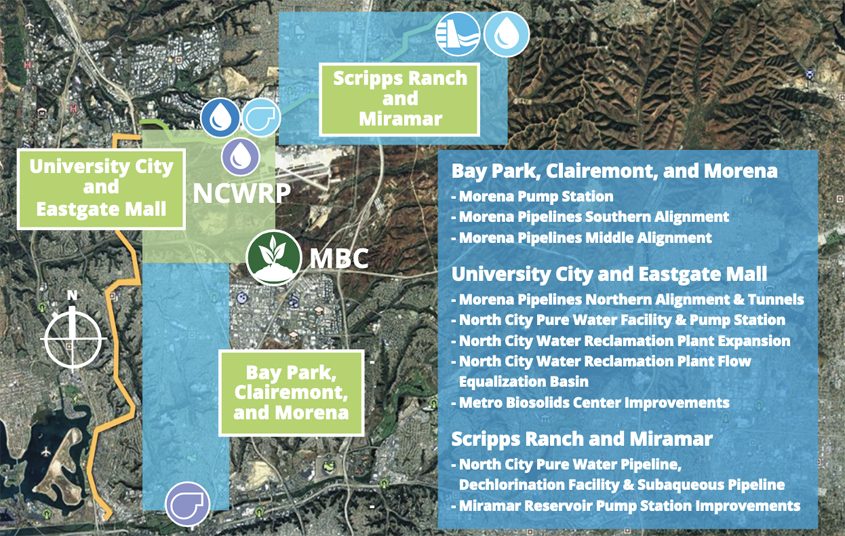
This project begins on Genesee Avenue and Appleton Street and continues on Genesee Avenue, Nobel Drive, Towne Centre Drive, and Executive Drive. Tunneling will be completed at Genesee Avenue and State Route 52 (San Clemente Creek), at Genesee Avenue and Rose Creek Canyon, and under Interstate 805. Map: City of San Diego
Currently, the City of San Diego depends primarily on a reliable imported water supply to deliver clean and safe drinking water to its communities. The investment in advanced water purification with the construction of Pure Water San Diego will help secure a high-quality, safe, local, and drought-proof water supply for the future. Phase 1 is scheduled to be completed and commence operation in 2024. Pure Water San Diego will eventually provide nearly half of San Diego’s water supply locally by 2035 with the completion of Phase 2.
Purified water produced at the completed plant will be delivered to the Miramar Reservoir, blended with the City of San Diego’s imported and local water sources, and treated again at the existing Miramar Water Treatment Plant. After this process, the water will be distributed to customers.
You can take a virtual tour of Pure Water San Diego’s demonstration facility at virtualtour.purewatersd.org More information about the Program can be found at www.purewatersd.org.
(Editor’s Note: The City of San Diego is one of the San Diego County Water Authority’s 24 member agencies that deliver water across the metropolitan San Diego region.)
For 60 years, Miramar Reservoir has been an integral part of the City of San Diego’s drinking water system and offers San Diegans a popular recreational area. Now, the reservoir is being called into service to play a vital part in San Diego’s future Pure Water system to sustain a reliable water supply.
The City of San Diego is commemorating the 60th anniversary of Miramar Reservoir, its role in the region’s history, and the part the reservoir will play in the future.
“We celebrate not only Miramar Reservoir’s past, but the critical role it will play when the Pure Water system is completed,” said Shauna Lorance, director of the San Diego Public Utilities Department. “Miramar Reservoir will continue to be a key part of our water system for many years to come.”
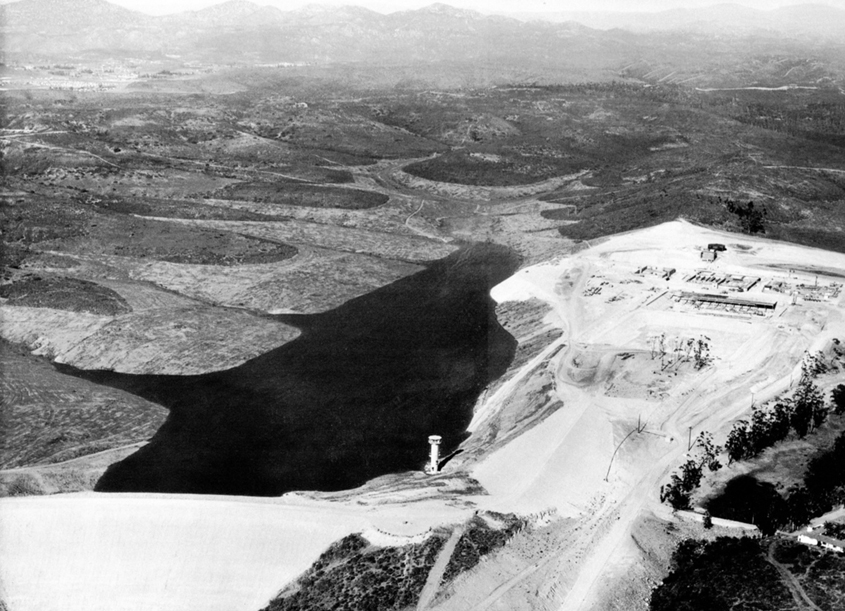
An aerial view of the Miramar Reservoir under construction in 1960. Photo: Jeff Pasek/City of San Diego
Miramar was the last of the City’s nine reservoirs to be developed. It was completed in 1960 as part of the second San Diego Aqueduct. The location previously had been the site of a small reservoir serving the vast ranch of newspaper publisher Edward W. Scripps.
Water flowing south to the reservoir originates from both the Colorado River Aqueduct and the California Aqueduct. The earthen embankment dam has a maximum height of 165 feet measured from the downstream toe, and has a base of 1,180 feet.
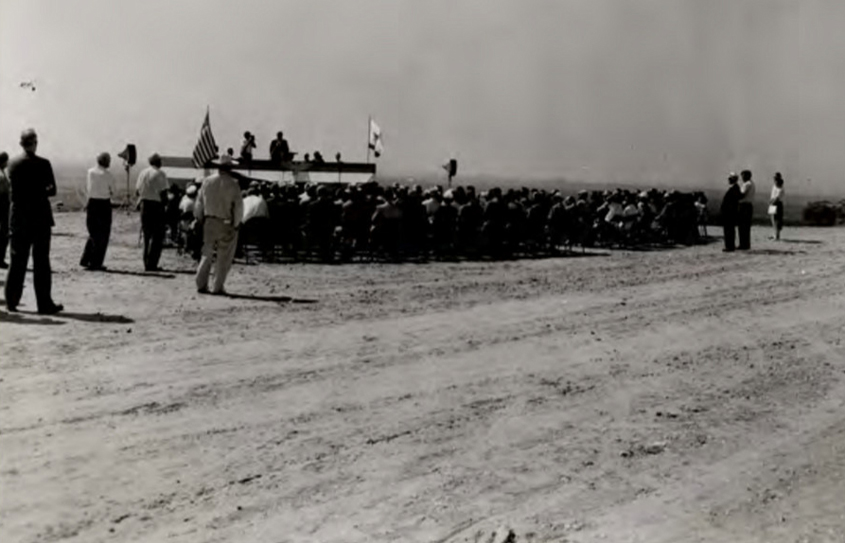
Dignitaries attend the Miramar Reservoir dedication ceremony in 1960. Photo: Jeff Pasek/City of San Diego
It was constructed by contractors Einer Brothers Inc. of Escondido and McCammon Construction, for $1.42 million. Land acquisition and engineering costs were approximately $730,000. Funds for the project came from an $11 million water bond approved by San Diego voters in June 1958.
When full, the reservoir covers 274 surface acres, reaches a maximum water depth of 114 feet, and has four miles of shoreline. Miramar Reservoir has a water storage capacity of 6,682 acre-feet.
Miramar Water Treatment Plant, which was completed in 1962 at a cost of $3.5 million, and expanded and upgraded in 2010, treats and filters drinking water distributed to customers in the northern part of San Diego.
Since the mid-1960s, the reservoir has been a popular recreational destination. An estimated 100,000 people visit Miramar each year to enjoy jogging, walking, biking, fishing, boating, picnicking, among other activities.
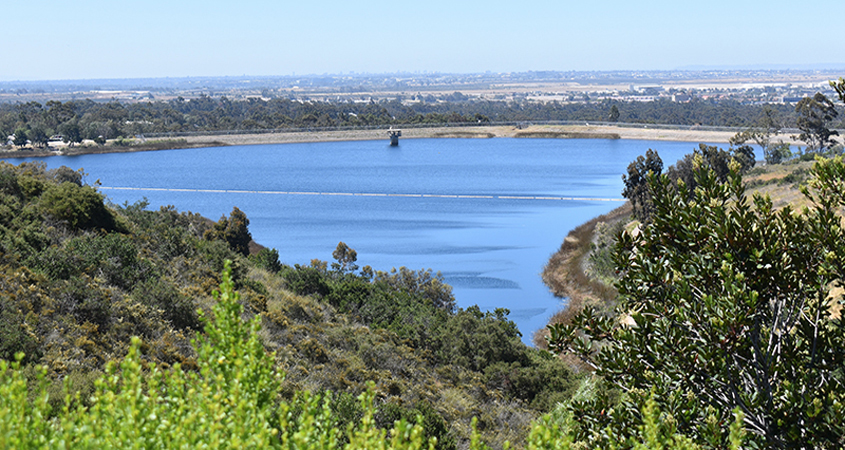
The Miramar Reservoir is poised to play a key role in the Pure Water San Diego project. Photo: City of San Diego
When the Pure Water system comes online, Miramar Reservoir will switch from holding imported water to holding purified water received through a pipeline from the planned North City Pure Water Facility. After water has been purified at the North City Pure Water Facility, it will then be transferred via pipeline to Miramar Reservoir. The Miramar Water Treatment Plant will clean the water again, and the water will be distributed to homes and businesses throughout northern San Diego.
Miramar Reservoir will continue use into the foreseeable future as it helps provide one-third of San Diego’s water supply locally by the end of 2035.
Pre-construction activities at the North City Water Reclamation Plant and the future Pure Water Facility are underway as part of Phase 1 of the Pure Water San Diego program. More than 80,000 cubic yards of soil have been moved to date during initial site work, the equivalent of approximately 25 Olympic sized swimming pools.
Last month, the San Diego Regional Water Quality Control Board adopted an order granting a National Pollutant Discharge Elimination System, or NPDES permit, to the City of San Diego to add purified water to the Miramar Reservoir for Phase 1 of Pure Water San Diego. The approval is a major milestone for the program.
NPDES permits contain discharge limits, monitoring and reporting requirements, and other provisions to ensure water quality and public health. The NPDES permit issued to the City is the first for a reservoir augmentation project in the state of California.
By implementing Phase 1, the City will be able to produce and store 30 million gallons per day of local water supplies and decrease its reliance on imported water.
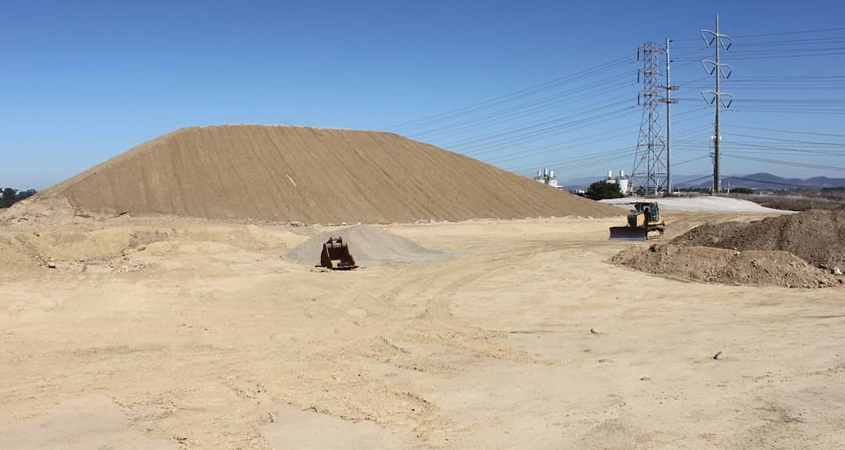
More than 80,000 cubic yards of soil have been moved to date during initial site work on the Pure Water San Diego project, which is the equivalent of approximately 25 Olympic sized swimming pools. Photo: City of San Diego
Phase 1 includes a series of pipelines and facilities to convey purified water to Miramar Reservoir. Adding the purified water to Miramar Reservoir will increase the reservoir’s beneficial use and optimize protection of water quality. The purified water will blend with the City’s imported sources and be treated again at the Miramar Water Treatment Plant and distributed to the public.
The purified water distribution area will include the portion of the City of San Diego that receives potable water from the Miramar Water Treatment Plant in addition to the City of Del Mar.
Phase 1 of Pure Water San Diego includes several projects: the Morena Pump Station and Pipelines, the North City Water Reclamation Plant Expansion, the North City Pure Water Facility, and the North City Pure Water Pump Station and Pipeline.